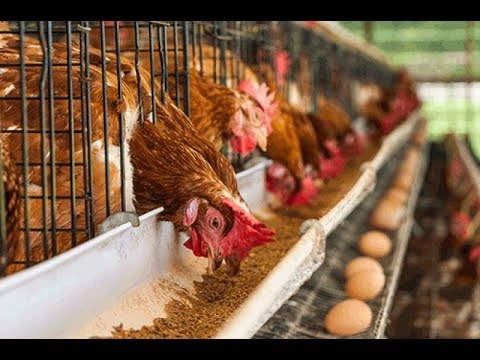- Despite PFJ’s gains, inadequate raw materials linger
- Sector loses more than US$5m to pandemic
- Millions of jobs on the line, food security under threat
Poultry farmers and feed-millers across the country are expressing worry over a looming collapse of the local poultry industry due to the scarcity and high cost of raw materials for feed production, which could result in significant job losses and exacerbation of food security challenges.
The Greater Accra Poultry Farmers Association (GAPFA) has said despite the gains of government’s ‘Planting for Food and Jobs’ initiative, at least in the increasing number of beneficiaries yearly, the policy has benefitted players in neighbouring countries more than the local economy – as poultry farmers in Burkina Faso, Ivory Coast and Togo usually source their materials from here and are willing to pay any amount.
The situation, according to GAPFA, could collapse the local industry if government does not come to the sector’s aid.
GAPFA’s President, Michael Nyarko Ampem, told B&FT that the association, and by extension the poultry industry, is having to deal with the scarcity of maize and wheat bran, and the attendant high cost of maize, wheat-bran and soya bean cake. These ingredients, he said, constitute about 80 percent of the total volume of ingredients needed to produce feed for poultry birds.
Indeed, in June 2020 a 50kg bag of maize was selling for GH¢65. Fast forward to November last year and the commodity’s price shot up to GH¢100; and in June this year, 2021, the same commodity at the same weight is selling for GH¢130; and the same applies for wheat-bran and soya bean cake.
“The resultant effect is that the working capital of GAPFA and most Feed-millers has been drastically reduced. But even more importantly, these cereals are hardly available on the market for us to purchase,” Mr. Nyarko Ampem said at GAPFA’s press briefing.
The effect of high prices for the cereals is that some farmers in the industry have had to sell their birds to sustain themselves in the business, with some of the farmers and feed-mills being shut down completely.
Job losses
GAPFA estimates that more than 3,500 jobs are on the line in the value chain this year, as the association alone is made up of some 1,775 farmers who purchase their feed from its factory.
Apart from GAPFA, there are another 21 feed-mills currently operating in Ghana. The poultry value chain – comprising seed producers, crop farmers, warehouse owners, transporters, feed-mills, hatcheries, hotels, restaurants etc., – employs more than five million Ghanaians.
Gains of the PFJ
Since its introduction, government’s ‘Planting for Food and Jobs’ initiative has seen an increase in farmer participation. At its inception in 2017, over 200,000 farmers were said to have participated in the policy, according to MoFA. In the second year (2018) MoFA indicated that nearly 700,000 farmers benefitted, with the programme reaching some one million farmers in 2019. In 2020, 1.2 million farmers were enrolled on the policy – with the initiative projected to benefit 1.5 million famers in 2021.
Current data obtained by the B&FT from MoFA indicate that the gains of PFJ in regard to maize production has been on the increase since 2017. The same applies to other cereals including rice, sorghum and soybean. The policy’s maize production output in 2017 was 485,100 metric tonnes (MT); 2018 – 637,200 MT; 2019 – 1,522,561 MT; and 2020 – 2,791,515 MT.
Response to PFJ gains
But GAPFA said these gains are not reflecting on the ground, as there is an inadequate volume of maize on the market to support current feed production demands. The association alone processes 160,000 MT of maize in a year, excluding the capacity of the other 21 feed mills nationwide.
Indeed, GAPFA and the Feed-millers’ association have said the current situation will negatively impact the country’s quest to ensure food security in the immediate future. Though the local poultry sector has lost some US$5million to the COVID-19 pandemic as purchases from restaurants, hotels, events drastically fell from last year, the situation has not changed much as the virus still lingers.
Ghana’s poultry imports, however, continue to soar yearly; with imports currently estimated at US$350million annually as the local industry accounts for a share of just 10 percent. This circumstance will also negatively impact government’s ‘Grow Ghana, Eat Ghana’ agenda.
Requests
GAPFA and other poultry industry players are therefore calling on government, through the Ministry of Food and Agriculture, to make wheat-bran and other ingredients readily available. The association also appealed for government to sign an MoU with flour and feed-millers to supply at least 50 percent of total requirements for the feed-mills at a mutually agreed price.










